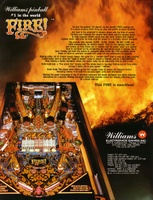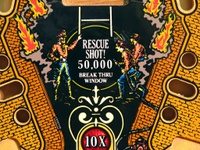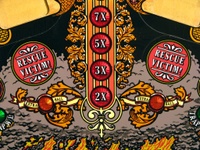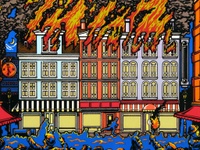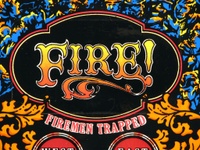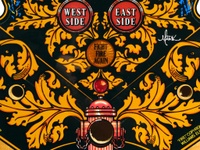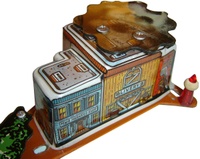
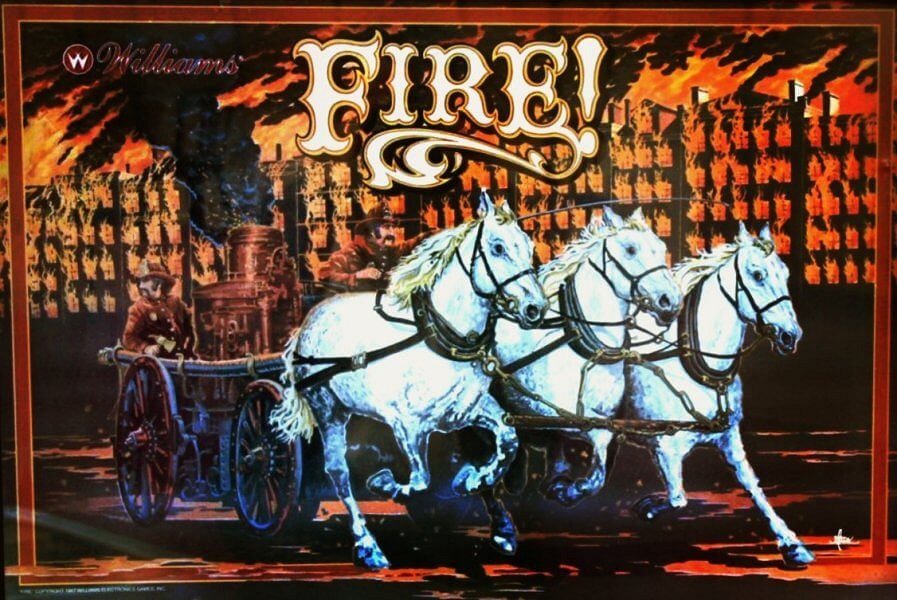
Fire!
Score display fire effects were later used on Midway's 1989 'Transporter the Rescue' and Midway's 1990 'Bugs Bunny's Birthday Ball'. Production Run Records for Fire!: Production Start Date: Jun-3-1987 Production End Date: Oct-12-1987 Production Run Quantity: 7697* First ship date: Jun-26-1987 Last ship date: Dec-7-1987 * This number is from Williams Daily Production Logs. The WMS Games Sales History printout dated 20-Dec-94 issued from the Accounting Department shows a total of 7,987 units were produced and for which they were paid. This total would include sample units but not prototype units (unless they, too, were sold and payment received) and was reported in the Company's financial public stock records therefore the accuracy of this quantity is guaranteed. There is no separate listing on this printout for the Fire! Champagne Edition so its quantity must have been included in that total. Even so, the sum of the Daily Production Log quantities for both games does not equal the total quantity listed on the Sales History printout. Pictured in this listing is a stripped "alternate" playfield showing a black background instead of the brown background used on production games. Reportedly, these so-called "black playfields" were a very large run of rejects that Williams never intended to use and thus showed up in the after-market as NOS playfields. They were never dimpled or drilled as they never made it to Williams production line. Also pictured here is a comparison of three variations of rollover cut-outs (slots) used in the upper right playfield. In the photo, the configuration on the left shows two long slots to accommodate the five rollover wireforms. The center configuration has five individual slots with unpainted wood between them. The configuration on the right shows five slots and with artwork between them. We asked both designer Barry Oursler and artist Mark Sprenger for comment on these playfield variations. Barry replies:From what I remember, we only used the brown ones. The only other person who might know would be Mark Sprenger. He did the artwork and any changes would have probably gone through him. For the cutouts, my best guess is that the one on the right is the correct one. I would rather have 5 separate cutouts that one long one. There is a better chance of the board warping with that long cutout.Mark Sprenger comments:I can say with 100% certainty that I never would have done the black playfield. The obvious reality being that why on earth would I spend all that time drawing each of those fleur-de-lis at the bottom of the playfield in black line only to fill them in with black??? I would not. I never approved of this modification or recall it. Two of the three images of the roll-over lanes were also modified. The one at far right, with individually trapped roll over switch routings was mine. From what I can see there, I suspect the modifications were done by the silk screen printer of the playfields at the time, Ad Posters [Advertising Posters - Chicago]. They communicated often directly with the manufacturer of the wooden playfield, Churchill Cabinets, and likely made this revision between them. When I look at the routing of the playfield it is evident the grooves ended up being longer than Barry had planned � ending up longer than my trap lines. It is likely that somewhere along the way that Ad Posters modified the playfield graphics to accommodate the rollover routings because ink could build up inside open routings and foul the screen (which is why we left bare wood around any through holes). Likely both versions were different attempts until it suited them. I was not informed about this. That was typical once everything was well into production.



